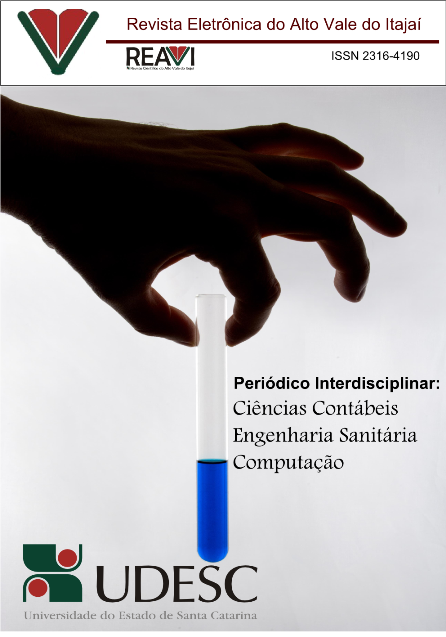Family office: estrutura organizativa de gestão de riqueza familiar
DOI:
https://doi.org/10.5965/2316419003032014013Palavras-chave:
family office, governança familiar, governançaResumo
O presente artigo analisou publicações sobre o tema family offices (estruturas organizativas administram a riqueza da família e prestam todo tipo de serviços para as mesmas). Esta estrutura organizativa pode ser utilizada como parte do plano de governança familiar. Family offices surgiram, inicialmente, para auxiliar as famílias no gerenciamento do produto gerado pelo negócio: a riqueza. Atualmente, os family offices podem prestar todo o tipo de serviço profissional. Os resultados encontrados mediante a análise realizada permitem concluir que há pouca pesquisa científica sobre family office, tanto nacional, quanto internacionalmente. Analisou-se uma amostra de 37 (trinta e sete) artigos, dos quais, 32 (trinta e dois) são de autoria internacional e 5 (cinco) são de autoria nacional. Os artigos foram escritos no período de 2001 a 2011. Há um predomínio de trabalhos opinativos (sem apresentar rigor científico) abrangendo 70% (setenta por cento) da amostra. Apenas 5% (cinco por cento) apresentam abordagem empírica. Esses resultados demonstram que há uma lacuna a ser preenchida com pesquisas empíricas sobre family office tanto no Brasil, quanto no exterior.
Downloads
Referências
AQUINO, R. V. Family Office. 2009. 40f. Trabalho de Conclusão de Curso de Especialização (Especialização em Administração) – Programa de Pós-Graduação em Administração, Universidade Federal do Rio Grande do Sul, Porto Alegre, RS, 2009. Disponível em http://www.lume.ufrgs.br/bitstream/handle/10183/26261/000748791.pdf?sequence=1. Acesso em: 5 julho 2011.
BERLE, A., MEANS, G. The modern corporation and private property. New York: Harcourt, 1932.
BRUNEL, J. L. P.; GRAY, L. P. Integrating family dynamics and governance in strategic asset allocation. The Journal of Wealth Management. v. 8, n. 3, p. 39-49, 2005.
CARROL, J. The functions of a family office. The Journal of Wealth Management. v.4, n. 2, p. 23-27, 2001.
CHITTOOR, R.; DAS, R. Professionalization of management and succession performance — A vital linkage. Family Business Review. v. 20, n. 1, p. 65–79, mar. 2007.
ESCUDER, S. L. Empresa familiar e os mecanismos e instrumentos facilitadores na gestão de conflitos societários. Revista de Administração da UNIMEP. v. 4, n. 3. p. 80, set. 2007.
EVANS, L. J. Wealthy investor attitudes, Expectations, and Behaviors toward risk and return. Journal of Wealth Management. v. 7, n. 1, p. 12-18, 2004.
FRANKE, L. P. Possibilidades jurídicas e viabilidade econômica na constituição de empresas administradoras de bens próprios. Revista jurídica FURB. v. 12, p. 95 – 111, 2008.
GARNHAM, C. The Growth of the family office and the challenge for the Future. Trusts & Trustees. v. 7, p. 8 – 14, 2001.
GILDING, M. Families and fortunes: Accumulation, management succession and inheritance in wealthy families. Journal of Sociology., v. 41, n. 1, p. 29-45, mar. 2005.
GILLAN, S. L. Recent developments in corporate governance: An overview. Journal of corporate finance. v. 12, 2006.
GRAY, L. Generational perspectives and their effects on goal-based allocation. The Journal of Wealth Management. v. 9, n. 1, p. 7-17, 2006.
GRAY, L. How family dynamics influence the structure of the family office. The Journal of Wealth Management. v. 8, n. 2, p. 9-17, 2005.
GRAY, L. The three forms of governance: A new approach to family wealth transfer and asset protection, part I. The Journal of Wealth Management. v. 10, n. 2, p. 10-19, 2007.
HAMILTON, S.; GODFREY, J. Preparing the next generation for the responsibilities of ownership. The Journal of Wealth Management. v. 10, n. 3, p. 8-16, 2007.
HAMILTON, S. Window on the future: Observations on the future of the family wealth marketplace. The Journal of Wealth Management. v. 9, n. 4, p. 7-12, 2007.
HAUSER, B. R. Family governance in 2004. The Journal of Wealth Management. v. 7, n. 1, p. 48-55, 2004.
HEINZ, P. E. Keeping the family in business. McKinsey Quarterly. v.4, p. 94–103, 2003.
HEINZ, P. E.; ANDRADE, L. F.; BARRA, J. M. All in the família. McKinsey Quarterly. v.4, p. 81-89, 2001.
IBGC – Instituto brasileiro de governança corporativa. Código das melhores práticas de governança corporativa. Disponível em: http://www.ibgc.org.br. Acesso em: 3 de maio de 2011.
ISDALE, M. H. Strategies for simplifying and increasing the effectiveness of wealth management. The Journal of Wealth Management. v. 9, n. 2, p. 14-18, 2006.
JENSEN, M.; MECKLING, W. Theory of the firm: managerial behavior, agency costs and ownership structure. The Journal of financial economics, v. 3, 1976.
LA PORTA, R.; SHLEIFER, A., LOPEZ-DE-SILANES, F. Corporate ownership around the world. Journal of finance, v. 54, 1999.
LOWENHAUPT, C. A. Freedom from wealth. The Journal of Wealth Management. v. 10, N. 4, p. 17-23, 2008.
LOWENHAUPT, C. A. Freedom from wealth and the contemporary global family: A new vision for family wealth management. Journal of Wealth Management. v. 11, n. 3, p. 21-29, 2008.
MASLINSKI , M. The family office: adapting to modern needs in a changing world. Trusts & Trustees. v. 12, n. 6, p. 27–29, 2006.
MIZUMOTO, F. M.; MACHADO FILHO, C. P. Práticas de governança corporativa em empresa familiar de capital fechado: um estudo de caso. Revista de Negócios. v. 12, n. 2, p. 3-17, 2007.
MONTFORD, C. Family office type investment management services for trustees and high net worth investors. Trusts & Trustees. v. 10, n. 3, p. 27 – 28, 2004.
MORCK, R. K. (editor). A history of corporate governance around the world. Chicago: National Bureau of Economic Research – NBER, 2005.
NEWTON, C. Adopting the Family Office. Journal of Financial Planning. v. 15, n. 6, p. 66-74, 2002.
SHLEIFER, A.; VISHNY, R. A survey of corporate governance. Journal of Finance. v. 52, n. 2, p. 737–775, 1997.
Downloads
Publicado
Como Citar
Edição
Seção
Licença
Copyright (c) 2014 CAROLINE DE OLIVEIRA ORTH, Melissa Gerhard, CARINE DE OLIVERIA, CLEA BEATRIZ MACAGNAN

Este trabalho está licenciado sob uma licença Creative Commons Attribution 4.0 International License.














